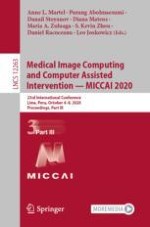2020 | OriginalPaper | Buchkapitel
Towards Accurate and Interpretable Surgical Skill Assessment: A Video-Based Method Incorporating Recognized Surgical Gestures and Skill Levels
verfasst von : Tianyu Wang, Yijie Wang, Mian Li
Erschienen in: Medical Image Computing and Computer Assisted Intervention – MICCAI 2020
Aktivieren Sie unsere intelligente Suche, um passende Fachinhalte oder Patente zu finden.
Wählen Sie Textabschnitte aus um mit Künstlicher Intelligenz passenden Patente zu finden. powered by
Markieren Sie Textabschnitte, um KI-gestützt weitere passende Inhalte zu finden. powered by
